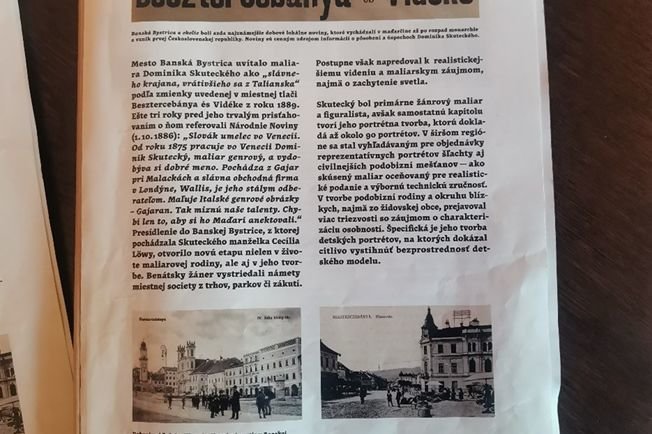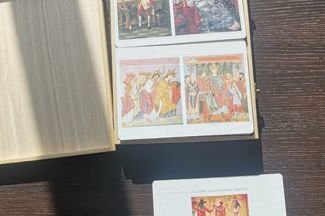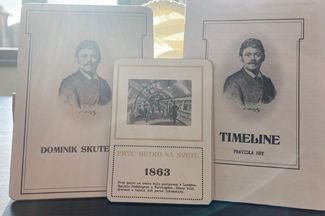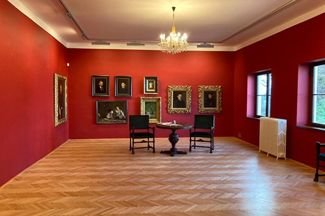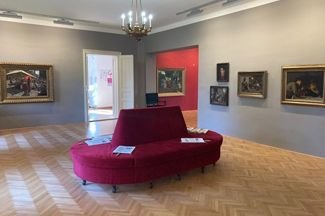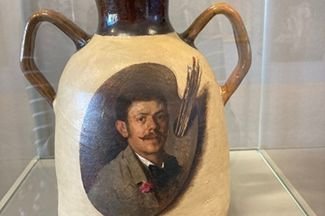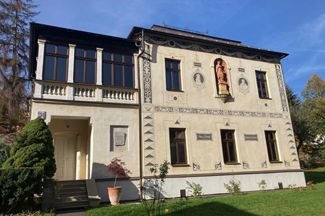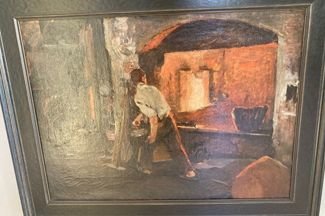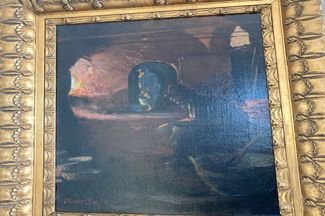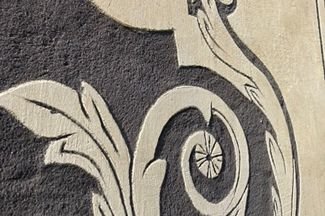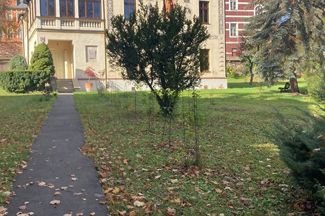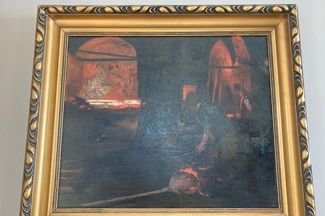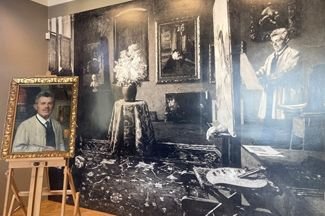Dominik Skutecký's villa - "ARS ET AMOR, LABOR ET GLORIA" - "art and love, labor and glory"
Dominik Skutecký was born on February 14. 1849 in Gajar and died on 13.03. 1921 in Banská Bystrica. He was born into a Jewish family and devoted his whole life to portraiture, drawing, and painting. Precisely because of his work, he is considered one of the most outstanding people who lived his life in Banská Bystrica, where he settled because his wife came from Banská Bystrica.
Dominik Skutecký's villa with a garden was built by the painter himself according to his artistic taste, admiration for Italian culture, and at the same time he wanted it to fulfill the character of a family villa. Dominik Skutecký worked in Vienna and Venice, and apparently it was in Venice that he liked the style of Italian buildings and architecture so much that he wanted to transfer these elements to his own villa. The construction of the villa was realised around 1896, it has neo-Renaissance elements, this building was realized by the painter's friend Adolf Holesch according to the original designs of the painter himself. The master decorated the facade of the villa with sgraffito decoration, portraits of his Italian models Raphael and Titian, and he erected a statue of the muse of painting in the middle of the facade. On the facade we can also find the painter's life creed "ARS ET AMOR, LABOR ET GLORIA" - "art and love, work and glory“.“.
The painter and his wife Cecílii Löwy had four children, 2 daughters and 2 sons. Only the youngest daughter, Karola, followed her father's example and was an artist. It was Karola who stayed to live in the villa after the painter's death with her husband, who set up a medical practise in the villa. However, during the Second World War, they were evicted from the villa because of their Jewish origin, and the German Gestapo moved into the villa. At that time, the villa was destroyed and the original form, in which we can see it today, was only reached in 1994, when it underwent reconstruction not only internally, but also the facade was repaired during that period, after the reconstruction the villa became Dominik's permanent exhibition Real. In 2011, the garden, which is an integral part of the villa complex, was declared part of the national cultural monument and bears the name Villa with the complex. This garden is the last city garden on Horná street in this part of Banská Bystrica and its wide surroundings.
The mastery of old Italian painting is typical for Skutecký's work, and later his interest in light in the direction of luminist (impressionist) painting was manifested in his paintings. During the tour, visitors can see well-known genre paintings with scenes from famous Venetian temples and nooks and crannies, as well as scenes from Banská Bystrica city life from the end of the Habsburg Monarchy, cultivated portraiture, and an exceptional cycle of boilermakers documenting traditional work in local copper hammers. Visitors can read about all paintings exhibited in Slovak or English.
Due to the series of paintings with the theme of copper hammers, Dominik Skutecký was considered a pioneer of the work genre in Slovakia. For this series, the artist was inspired by an industrial area located in the vicinity of Banská Bystrica. The plant operated for almost 500 years, from 1496 to 1991. The Hámorské workshops were mainly engaged in the production of copper boilers, dishes, and semifinished products. Currently, the premises of the former workshops are dilapidated, destroyed, or used for other purposes. Dominik Skutecký devoted himself to this topic in the last two decades of his life. What is specific about the painter's work is that he depicted the manufactory method of production and the old world by craftsmen. According to the paintings, the artist was interested in the aesthetic potential of a specific environment, in the paintings he shows massive fireplaces, thanks to which the figures of working boilermakers were illuminated. The painter tried to show admiration for the master work and skilful handling of tools with his paintings. Dominik Skutecký depicted this craft in such detail that today his paintings serve historians who draw important historical material from them.
